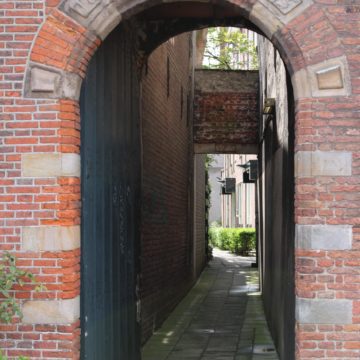While in lockdown we need to find new ways to discover and enjoy the heritage around us. Investigating the story of our cities is a nice way of doing so
Category: WHEN
Convento do Carmo: A Roofless Survivor
In the heart of ancient Lisbon, a roofless convent stood still.
What Lies Beneath
From beautiful castles to crystalline lakes, Slovenia has plenty to offer its visitors. But there's more to the country than meets the eye...
The Ottoman tower-house of Rhodes
Read about the only surviving Ottoman tower-house of Rhodes. This hidden little gem will take you off the beaten track on this popular Mediterranean island.
The Naumburg Cathedral vs. the Yellow Phone Booth.
The central question of this article is ‘What do we define as heritage'. In some cases heritage is quite clear but in many others there is room for doubt. In this article we present you the case of the Naumburg Cathedral and the Yellow Phone booth.
What Are We Missing?
Since humans first stood and walked on two feet, walking has been a very reliable means of transportation, maybe the most reliable. It is true walking was more difficult in the past and that gender, social status and even fashion played a huge role. Nowadays we rely on comfortable shoes and flexible soles that can carry us anywhere. Mobile phones, headphones, traffic, faces or buildings keep us from literally watching our step and see cobblestones, for instance.
Today’s Work Is Tomorrow’s Heritage
In Bucharest lie countless examples of tangible and intangible heritage. Some characters from the past worked a great deal to make sure they leave behind a consistent and meaningful legacy, or simply put – heritage. Let us account for their effort differently. Not enriched with the means of Social Media and its participatory empowerment, 18th – 19th centuries socialising meant more awareness and survival.
Layers of History at Golesti (1)
Romanian Arges county hosts the “Golesti Viticulture and Tree Growing” Museum. The axis inside this heritage “filled” 12 hectares museum complex is the Golesti manor. It bears the name of an old boyar family of Wallachia (Romania’s historical southern region) – “Golescu”, informally known as “Golesti”.








